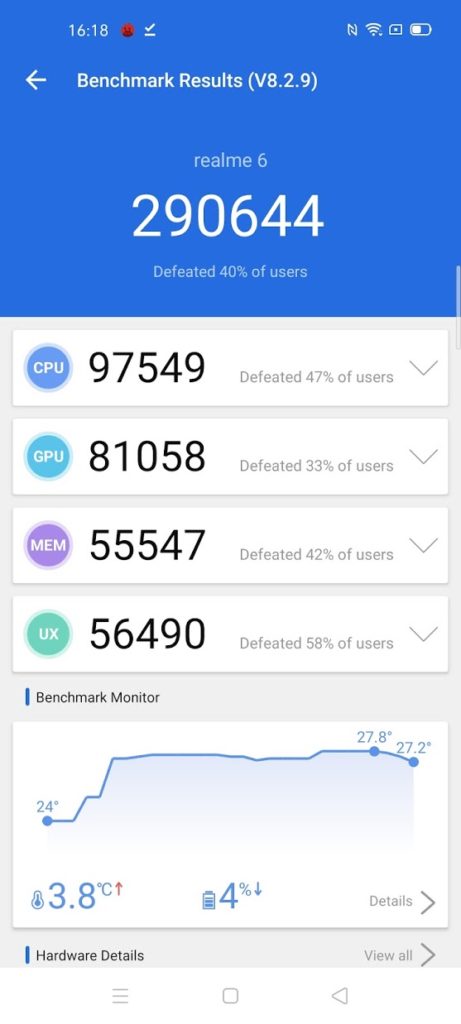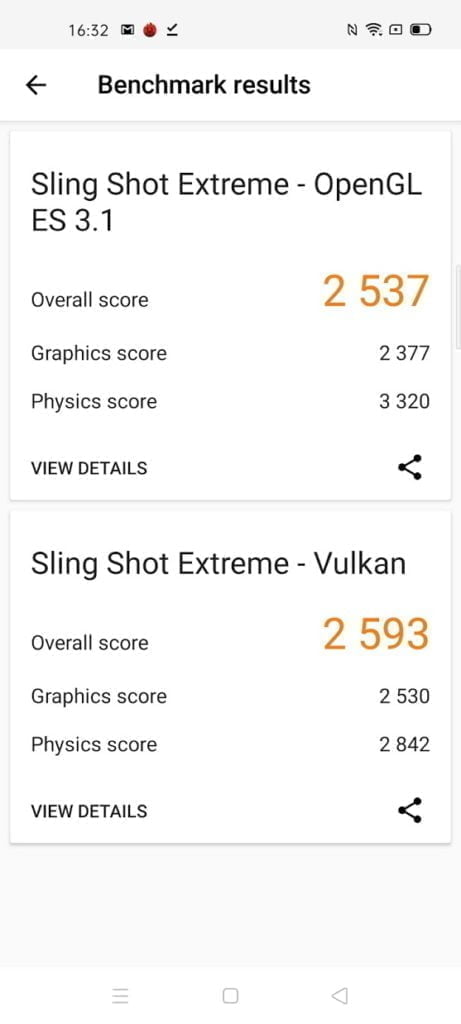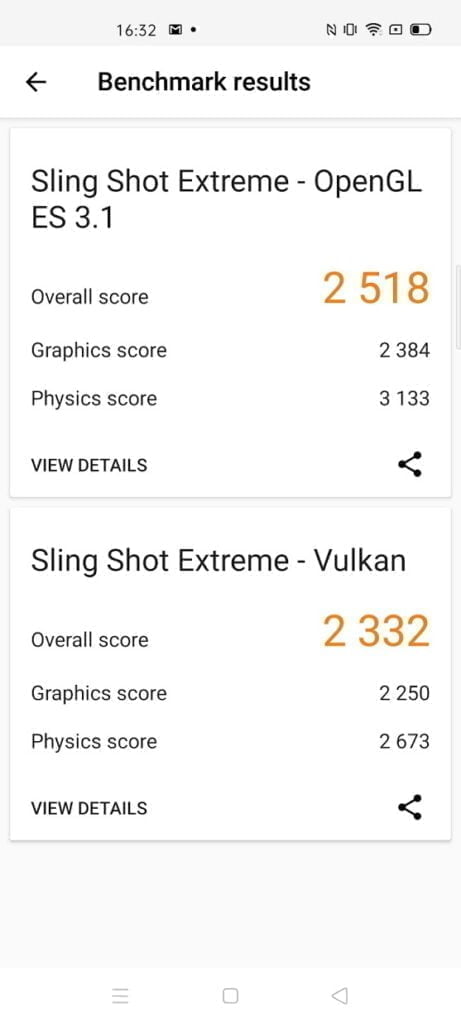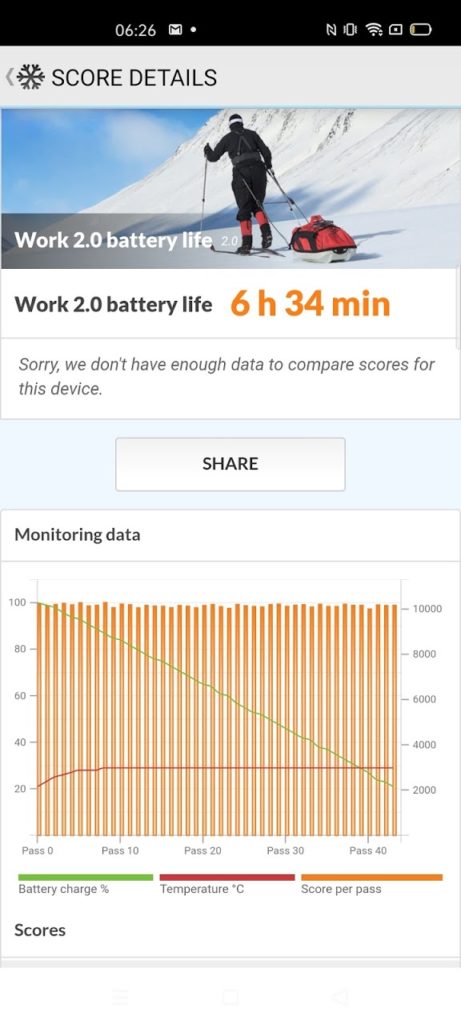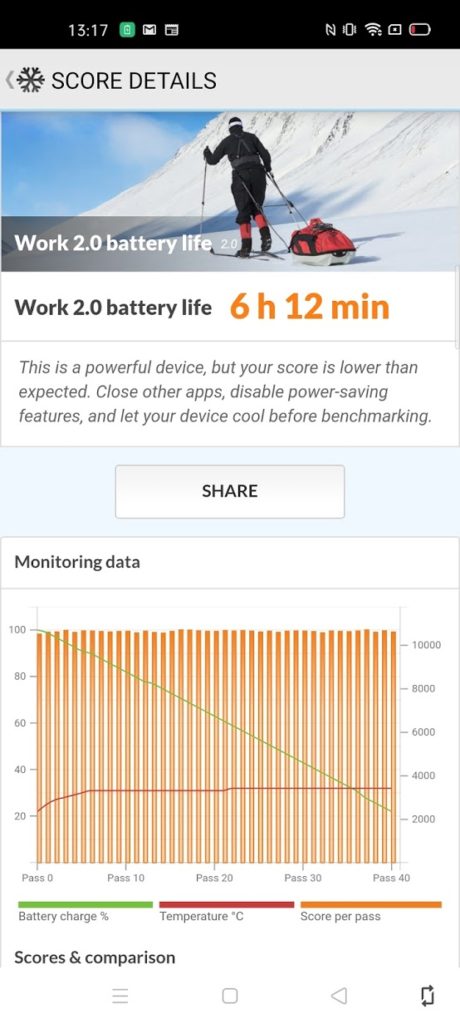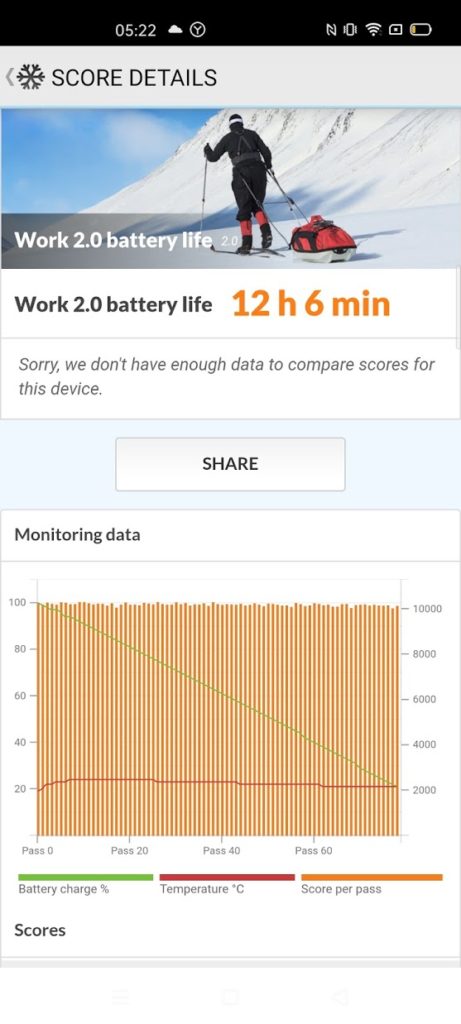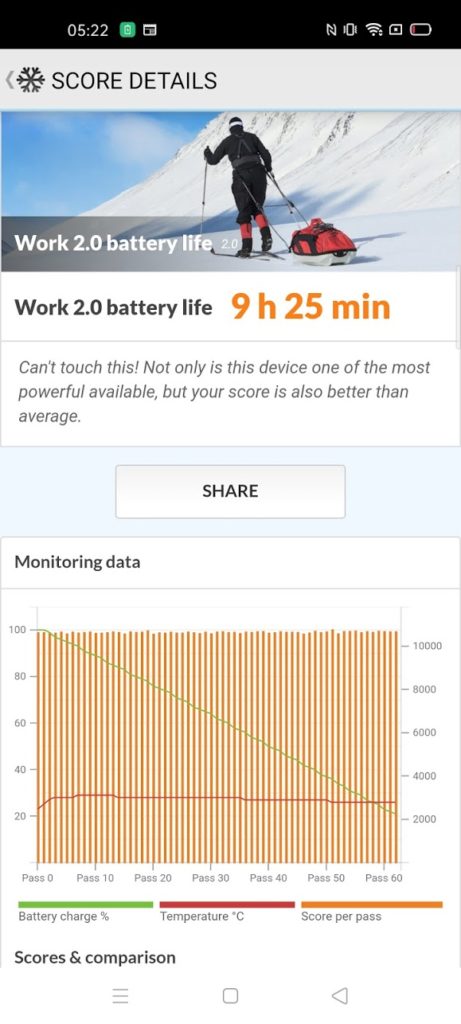Today the Realme 6 series launches in the EU, and I have been reviewing the 6 and 6 Pro for the last week or so. Both phones are amazing for the price and a significant upgrade overall from last years models.
These two phones have had a considerable bump from the previous 5 series which used an SD665 in the standard model and an SD712 in the Pro model.
The new Pro model as Snapdragon 720G which is almost the same specification as the Snapdragon 735G which we saw on the Realme X2 last year.
However, the standard Realme 6 uses the MediaTek Helio G90t – while this chipset is made on a less efficient 12nm fabrication process, it is technically a more powerful chipset than the SD720G and last year it beat the SD735G in many of the benchmarks I tried it on.
During this analysis, I have tested:
- Realme 6 Pro – Qualcomm Snapdragon 720G
- Realme 6 – MediaTek Helio G90T
- Realme 5 Pro – Qualcomm Snapdragon 712
- Realme 5 – Qualcomm Snapdragon 665
Not on hand but previously reviewed:
- Realme X2 (XT in other regions) – Qualcomm Snapdragon 735G
Antutu Benchmark
| Total | CPU | GPU | MEM | UX | |
|---|---|---|---|---|---|
| Realme 6 Pro – SD720G | 282336 | 104143 | 70801 | 52273 | 55119 |
| Realme 6 – Helio G90T | 290644 | 97549 | 81058 | 55547 | 56490 |
| Realme 5 Pro – SD712 | 216501 | 73459 | 61872 | 42013 | 39157 |
| Realme 5 SD665 | 167866 | 71157 | 33489 | 36568 | 26652 |
| Realme X2 – SD735G | 258311 | 98328 | 67574 | 47945 | 44464 |
Ok, so first, moving between generations shows a massive
increase in performance with a 30% improvement between the Realme 5 Pro and the
Realme 6 Pro.
However, as predicted, the more affordable Realme 6 actually
out performs its bigger brother, it is only a small 3% difference and I would
expect real life performance will be about the same.
The Helio G90T is clearly better in the GPU department with
a 14.5% advantage over the SD720G, on the flip side the SD720 is a comfortable 6.8%
ahead with the CPU performance.
Even more impressive is the 73% leap in performance going
from the Realme 5 to the Realme 6.
Geekbench 5 Benchmark
-
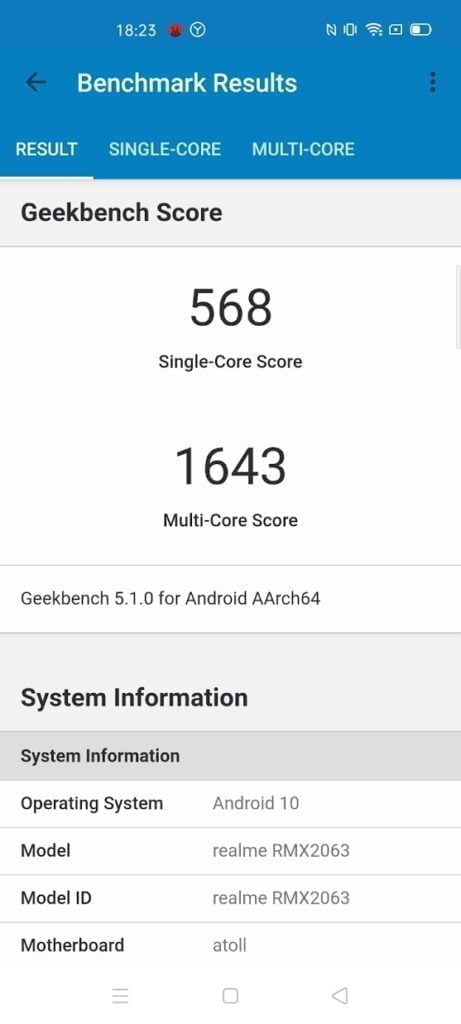
Realme 6 Pro with Snapdragon -
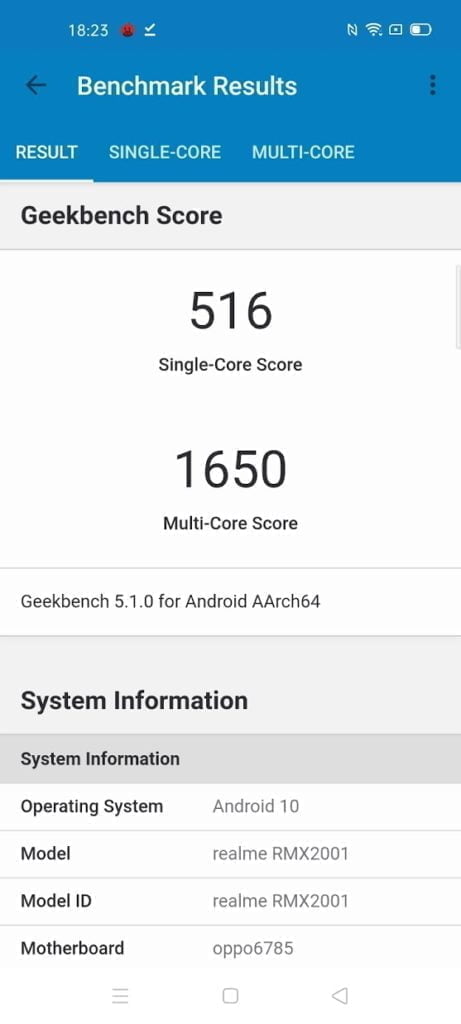
Realme 6 with Helio G90T
| Single Core | Multi Core | |
|---|---|---|
| Realme 6 Pro – SD720G | 568 | 1643 |
| Realme 6 – Helio G90T | 516 | 1650 |
| Realme 5 Pro – SD712 | 321 | 1481 |
| Realme 5 SD665 | 316 | 1363 |
| Realme X2 – SD735G | 546 | 1729 |
Again, a significant jump between generations, giving you a 77%
improvement on the single core result though a less impressive but still decent
bump of 11% on multi-core between the 5 Pro and 6 Pro.
Previously the SD735G was comfortably ahead of the HelioG90T in this test, but the SD720G isn’t the exact same spec and ends up being almost identical on the multi-core but still 10% ahead for the single core.
3DMark Benchmark
| Slngshot OpenGL | Vulkan | |
|---|---|---|
| Realme 6 Pro – SD720G | 2518 | 2332 |
| Realme 6 – Helio G90T | 2537 | 2593 |
| Realme 5 Pro – SD712 | 2091 | 1979 |
| Realme 5 SD665 | 1090 | 1061 |
| Realme X2 – SD735G | 2405 | 2270 |
It would seem that the GPU on the SD720G is clocked higher
than the SD730G with the 3D marks being much closer to the Helio G90T with this
generation.
The Realme 6 still outperforms the Pro model though with a
0.75% difference in the OpenGL score and 11% difference in the Vulcan test.
Moving from the Realme 5 to 6 yields a 132% & 144% improvement
in the two tests respectively.
The Pro models differ by 20% and 18% in the two tests.
AI Benchmark
- Realme 6 Pro – SD720G – 17895
- Realme 6 – Helio G90T – 13807
- Realme 5 Pro – SD712 – 6518
- Realme 5 SD665 – 8252
- Realme X2 – SD735G – No tested
Ai Benchmark has a tendency to have questionable results, and
this may explain the SD665 outperforming the SD712.
However, we can clearly see how companies have shifted their
focus towards AI performance with the Realme 6 Pro scoring 174.5% higher than
the 5 Pro and also 30% higher than the Helio G90T
PCMark Benchmark
- Realme 6 Pro – SD720G – 9936
- Realme 6 – Helio G90T – 10589
- Realme 5 Pro – SD712 – 8729
- Realme 5 SD665 – 7960
- Realme X2 – SD735G – Not tested
Androbench
| Seq Rd MB/s | Seq Wr MB/s | Rnd Rd iops | Rnd Wr iops | |
|---|---|---|---|---|
| Realme 6 Pro – SD720G | 491 | 194 | 33510 | 30386 |
| Realme 6 – Helio G90T | 524 | 204 | 43973 | 32746 |
| Realme 5 Pro – SD712 | 293 | 236 | 16553 | 3572 |
| Realme 5 SD665 | 484 | 189 | 29069 | 5521 |
Battery Benchmark
With the screen brightness at max the results are as follows:
- Realme 6 Pro – SD720G – 6h 34m
- Realme 6 – Helio G90T – 6h 12m
- Realme 5 Pro – SD712 – 6h 27m
- Realme 5 SD665 – test failed (twice)
- Realme X2 – SD735G – not tested
Tests were repeated twice as the Realme 6 indicated it was lower than expected on the max brightness test.
With this test, the Snapdragon 720G has a moderate advantage in battery performance and this could likely be more important than overall processing performance for many users.
With the screen brightness set to 50% the phone switched to 60Hz screen refresh rate and dark mode enabled the differences between the two Realme 6 chipsets became more apparent.
- Realme 6 Pro – 12h 6min
- Realme 6 – 9h 25m
Within the Android OS settings, this showed up as a screen on time of 10 hours 14 minutes vs 8 hours 4 mins.
So, unsurprisingly, the Qualcomm Snapdragon 720G with its smaller fabrication process is much more efficient than the Mediatek Helio G90T.
Overall
Realme have really upped the ante with this generation.
If you assume the SD720G is a replacement to the SD712 then
the gains between generations are phenomenal, far higher than you see moving from
the flagship chipset SD855 to SD865.
In terms of raw performance, the MediaTek Helio G90T is
still clearly ahead in most benchmarks, and if you are on a strict budget wanting
a phone that is great for gaming, the Realme 6 will be a superb choice.
In real-world performance, I can barely tell the difference between the two phones, but the SD720G will potentially have a significant advantage in battery performance, so this is the better option for your average user, assuming the Realme 6 Pro fits in with your budget.
.
